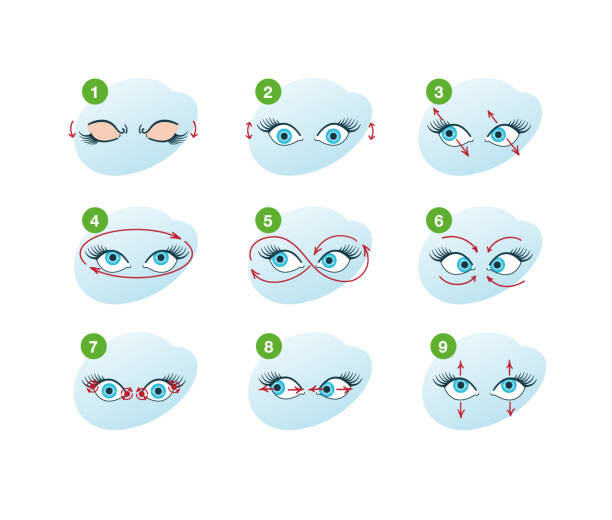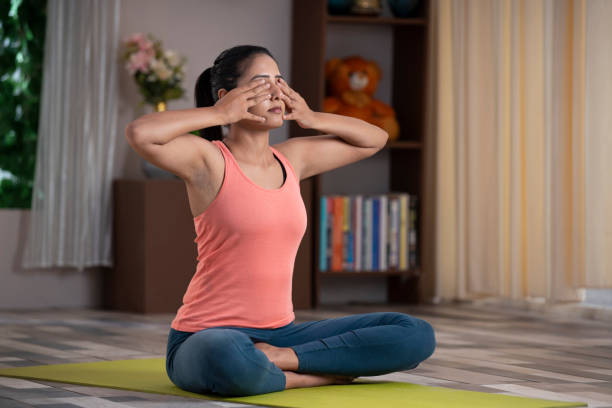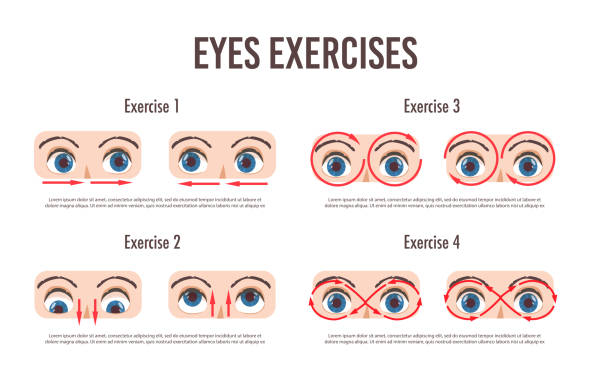Introduction: The Truth About Eye Exercises
Have you ever wondered if eye exercises can really improve your vision? These days, people are spending more time than ever staring at screens. This can lead to tired, dry eyes and even blurry vision. As a result, many are searching for natural ways to improve eyesight and reduce eye strain. Some believe that doing simple eye exercises each day can sharpen vision and help relax tired eyes. Others say these exercises are more of a myth than a real solution. So, what’s the truth behind these claims?
In this article, we’ll take a closer look at how eye exercises are supposed to work, what scientific studies and eye care experts say, and easy tips to help you keep your eyes healthy and strong every day.
What Are Eye Exercises?
Eye exercises are simple routines or movements that aim to strengthen your eye muscles, improve focus, and reduce eye strain. Many people use them as natural ways to improve vision without needing glasses or surgery. These exercises are often part of vision therapy and are said to help with common issues like blurry vision, tired eyes, and trouble focusing after long hours of screen time. While results can vary, some believe regular practice can support better eye health and sharper vision over time.
Common Types of Eye Exercises
Here are some popular eye exercises that many people try to reduce eye strain and support better vision:
Palming – Rub your hands together to create warmth, then gently place them over your closed eyes. This helps relax your eye muscles and reduce stress.
Eye Rolling – Slowly roll your eyes in a circular motion. This movement can help improve flexibility and reduce stiffness in the eye muscles.
Focus Change – Hold your thumb a few inches from your face and focus on it. Then shift your focus to something far away. Repeat this to train your eyes to switch focus more easily.
Figure Eight – Imagine a large figure eight turned on its side. Slowly trace the shape with your eyes. This helps improve eye control and coordination.
20-20-20 Rule – Every 20 minutes, take a break from your screen and look at something 20 feet away for 20 seconds. This simple habit can help reduce digital eye strain.

The Promise: Can Eye Exercises Improve Eyesight?
Many eye exercise programs, such as the Bates Method, claim that doing specific exercises regularly can help improve vision naturally. These programs often suggest that common vision problems are caused by eye strain, stress, or weak eye muscles that can be strengthened through training. Supporters believe that with enough practice, you can reduce your need for glasses or contacts.
But does it really work? Can these methods truly lead to better eyesight, or are the results just temporary?
What the Science Says
Most eye health experts and scientific studies agree that eye exercises cannot fix common vision problems like nearsightedness, farsightedness, or astigmatism. These conditions are usually caused by the shape of the eye or natural changes in the lens that happen with age. Since these are physical issues with how the eye bends light, exercises alone won’t correct them. While eye exercises may help reduce eye strain or improve focus for short periods, they won’t change the structure of your eye.
What Eye Exercises Can Help With
While eye exercises won’t reverse vision loss or fix major eyesight problems, they can still be helpful in other ways:
- Reducing eye strain caused by long hours of screen time or reading.
- Improving eye coordination in people with certain eye muscle problems.
- Helping with convergence insufficiency, a condition where the eyes have trouble working together when focusing on things up close.
According to the American Academy of Ophthalmology (AAO), eye exercises won’t correct vision conditions like nearsightedness or astigmatism. However, they may ease discomfort from eye fatigue and support more comfortable vision during daily tasks.
Benefits of Doing Eye Exercises Regularly
Even if eye exercises don’t actually improve your eyesight, they can still be good for your overall eye health. Here’s why they’re worth trying:
1. Relieves Eye Fatigue
Staring at screens for long periods can cause digital eye strain, leaving your eyes feeling tired, dry, or blurry. Doing simple eye exercises during breaks can help your eyes relax, reduce discomfort, and make them feel more refreshed throughout the day.
2. Encourages Eye Movement
Changing your focus regularly and moving your eyes can help prevent stiffness and dryness. These simple habits keep your eye muscles active and encourage natural moisture, which reduces discomfort from staring at screens or reading for too long.
3. Improves Focus and Concentration
Eye exercises, especially following the 20-20-20 rule, can help improve your ability to stay focused for longer periods. Taking regular breaks to look away from screens helps relax your eyes and refresh your focus, making it easier to concentrate on your work or reading.
4. Promotes Relaxation
Palming and deep breathing are simple techniques that can help reduce tension not only in your eyes but also throughout your whole body. These calming exercises relax your eye muscles and lower overall stress, which can improve how you feel both physically and mentally.
Who Can Benefit Most from Eye Exercises?
While anyone can try eye exercises, some groups may benefit from them more than others:
- People who experience digital eye strain, such as office workers and students who spend long hours in front of screens.
- Children who need vision therapy to improve eye coordination and focus.
- Individuals recovering from certain eye surgeries or injuries, but only with their doctor’s approval.
- Patients diagnosed with convergence insufficiency, a condition where the eyes have trouble working together when looking at close objects.

Eye Exercises to Try at Home
Let’s look at a few easy exercises you can do daily. No equipment needed!
1. Focus Shifting
How to do it:
- Hold your thumb a few inches from your face.
- Focus on it for 5 seconds.
- Shift your gaze to something 10-20 feet away.
- Focus for 5 seconds.
- Repeat 10 times.
2. Eye Rolling
How to do it:
- Sit comfortably and look straight ahead.
- Slowly roll your eyes in a circle clockwise.
- Do this 5 times, then roll them counterclockwise 5 times.
3. Near and Far Focus
How to do it:
- Focus on something close (like your finger).
- Then shift to an object far away.
- Repeat 10 times.
4. Palming
How to do it:
- Rub your hands together to warm them.
- Gently place your palms over your closed eyes.
- Relax and breathe deeply for a minute.
Other Ways to Improve Eye Health Naturally
While exercises can help with strain, keeping your eyes healthy requires a few other smart habits.
Eat for Eye Health
Foods rich in vitamins A, C, E, and zinc support healthy eyes. Great choices include:
- Carrots
- Spinach
- Sweet potatoes
- Salmon
- Eggs
Harvard Health recommends leafy greens and omega-3s as top foods for vision.
Stay Hydrated
Dry eyes can cause your vision to feel blurry and uncomfortable. One easy way to help prevent this is to drink plenty of water throughout the day to stay hydrated. Proper hydration supports natural eye moisture and helps keep your eyes clear and comfortable.
Get Enough Sleep
Resting your eyes is just as important as doing eye exercises. Getting enough sleep each night helps your eyes recover from the stress and strain they face every day. Good rest allows your eye muscles to relax and supports overall eye health, making it easier to see clearly and feel comfortable.
Protect Your Eyes from the Sun
Wearing UV-blocking sunglasses whenever you are outside can help protect your eyes from harmful sunlight. These sunglasses reduce the risk of damage caused by ultraviolet (UV) rays and help keep your eyes healthy over time.
Take Screen Breaks
To help reduce digital eye strain, follow the 20-20-20 rule: every 20 minutes, take a break from your screen and look at something 20 feet away for at least 20 seconds. This simple habit gives your eyes a chance to rest and prevents tiredness from long screen time.
What About Eye Training Apps?
There are many apps that offer guided eye workouts. While some users find them helpful for reminders and structure, there’s limited evidence that these apps can improve your vision permanently.
Still, they can help promote better screen habits and provide a sense of routine.

When to See an Eye Doctor
If you’re having trouble seeing clearly, always consult an eye care professional. Vision problems could be a sign of something more serious. Eye exercises are no substitute for glasses, contacts, or medical treatment.
Check with an optometrist or ophthalmologist before starting any vision therapy, especially if you have:
- Double vision
- Eye pain
- Headaches from reading
- A sudden change in vision
Final Thoughts: Do Eye Exercises Really Work?
The short answer? Eye exercises won’t cure your vision problems, but they can help you feel more comfortable, especially if you spend hours looking at screens.
They’re a natural way to relax your eyes, reduce fatigue, and build good eye habits. While they won’t replace glasses or surgery, they are a great tool to support your overall eye health.
Call to Action: Take Care of Your Eyes Today
Want to give your eyes some love? Start adding a few eye exercises into your daily routine. They’re easy, free, and take just a few minutes. And don’t forget to eat healthy, take screen breaks, and schedule regular eye exams.
👁️ Try the 20-20-20 rule today and see how your eyes feel!

